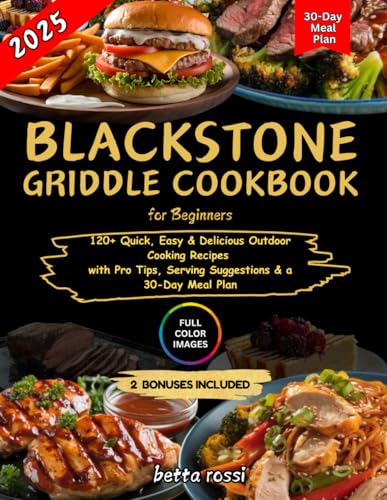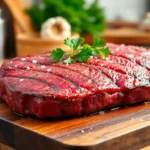We’ve all been there – standing in the barbecue sauce aisle completely overwhelmed by dozens of options that promise the perfect balance of sweet and spicy. That’s exactly why we created this sweet heat BBQ sauce recipe that delivers the ideal combination of smoky sweetness with just the right kick of heat.
This sauce transforms ordinary grilled meats into restaurant-quality masterpieces. The secret lies in our carefully balanced blend of brown sugar and honey for sweetness paired with chipotle peppers and cayenne for that perfect heat level that won’t overpower your taste buds.
What makes our recipe special is how versatile it is – we use it as a glaze for ribs, a dipping sauce for chicken wings, and even as a marinade for pulled pork. Once you taste this homemade version, you’ll never go back to store-bought bottles again.
Ingredients
Creating our signature sweet heat BBQ sauce requires carefully selected ingredients that work together to achieve that perfect balance of flavors. Each component plays a crucial role in building layers of taste that will transform your grilled meats into memorable dishes.
Base Ingredients
- 1 cup ketchup
- 1/2 cup apple cider vinegar
- 1/4 cup tomato paste
- 2 tablespoons Worcestershire sauce
- 1 tablespoon soy sauce
- 1/2 cup water
Sweetening Agents
- 1/3 cup brown sugar (packed)
- 1/4 cup honey
- 2 tablespoons maple syrup
- 1 tablespoon molasses
Heat Components
- 2 chipotle peppers in adobo sauce (finely chopped)
- 1 tablespoon adobo sauce from chipotle can
- 1 teaspoon cayenne pepper
- 1/2 teaspoon red pepper flakes
- 1/4 teaspoon ghost pepper powder (optional for extra heat)
Flavor Enhancers
- 2 cloves garlic (minced)
- 1 medium yellow onion (finely diced)
- 1 tablespoon smoked paprika
- 2 teaspoons ground cumin
- 1 teaspoon onion powder
- 1 teaspoon garlic powder
- 1/2 teaspoon ground black pepper
- 1/2 teaspoon salt
- 1/4 teaspoon ground mustard
- 1/4 teaspoon liquid smoke
Equipment Needed

Creating our sweet heat BBQ sauce requires basic kitchen equipment that most home cooks already have on hand. We need a medium saucepan with a 2-quart capacity to accommodate all our ingredients while providing enough space for proper simmering and stirring.
Essential measuring tools include standard measuring cups and measuring spoons for precise ingredient ratios. Accuracy in measurements ensures our sauce achieves the perfect balance of sweet and heat every time we make it.
A reliable whisk or wooden spoon becomes crucial for continuous stirring during the cooking process. This prevents our sauce from sticking to the bottom of the pan and ensures even distribution of all flavor components as they meld together.
Storage containers play an important role in preserving our finished sauce. We recommend having airtight containers or mason jars ready for proper storage in the refrigerator. Glass containers work particularly well as they don’t absorb flavors or odors from the sauce.
Optional equipment that can enhance our cooking experience includes a fine-mesh strainer for those who prefer an ultra-smooth sauce texture. Some cooks also find a silicone spatula helpful for scraping every bit of sauce from the pan into storage containers.
Instructions

We’ll walk through each step to create this perfectly balanced sweet heat BBQ sauce that delivers complex flavors in every drop. Our method ensures proper flavor development and the ideal consistency for all your grilling needs.
Prep Work
We start by gathering all our fresh ingredients and preparing them for cooking. Finely chop the onions and mince the garlic to maximize their flavor release during cooking. Fresh aromatics provide superior taste compared to powdered alternatives and create the foundation for our sauce’s depth.
Measure out all remaining ingredients and arrange them near your workspace. This preparation prevents overcooking any component while searching for the next ingredient. Having everything ready streamlines the cooking process and ensures consistent results.
Combining the Base
We begin by melting our chosen fat in a medium saucepan over medium heat. Bacon fat adds smoky richness while butter or ghee provides creamy depth to the sauce base.
Add the chopped onions to the heated fat and cook for approximately 5 minutes until they soften without browning. The onions should become translucent and fragrant during this stage. Next we add the minced garlic and cook for just 30 seconds to awaken its flavor without burning.
Pour in the ketchup or tomato puree followed by the brown sugar and molasses. Blackstrap molasses delivers deeper flavor complexity than regular molasses. We then add the Worcestershire sauce and apple cider vinegar along with the honey and smoked paprika. Whisk all ingredients until the mixture becomes completely smooth and well combined.
Adding Sweetness and Heat
We carefully balance the sweet and spicy elements to achieve our signature flavor profile. Adjust the sweetness by adding more brown sugar for caramel notes or additional honey for floral sweetness. Molasses contributes robust depth that complements the other sweet components.
For heat we incorporate chipotle chili powder or cayenne pepper to taste. Red pepper flakes provide textural interest and bursts of heat throughout the sauce. Smoked paprika or a few drops of liquid smoke enhance the smoky character that defines great BBQ sauce. We taste frequently during this stage to ensure the perfect sweet heat balance.
Simmering and Thickening
We bring the mixture to a boil over medium high heat then immediately reduce to low heat for simmering. The sauce should bubble gently without violent boiling that could cause burning or separation.
Simmer the sauce uncovered for 20 to 30 minutes while stirring frequently to prevent sticking and encourage proper thickening. The sauce will reduce and concentrate in flavor during this process. We adjust thickness by continuing to simmer for a thicker consistency or adding small amounts of water for a thinner texture. The finished sauce should coat the back of a spoon when ready.
Final Seasoning Adjustments
We taste the sauce and make final adjustments to perfect the flavor balance. Add more brown sugar or molasses if additional sweetness is needed. Increase the apple cider vinegar for more acidity and brightness. A splash of Worcestershire sauce or Dijon mustard adds complexity and depth.
For enhanced smokiness and heat we add extra smoked paprika or chili powder to taste. Some prefer to puree the sauce using an immersion blender for completely smooth texture. Others enjoy the rustic character of the chunky onions and spices. We let the sauce cool completely before transferring to airtight mason jars for storage.
Cooking Tips and Techniques

Mastering the art of sweet heat BBQ sauce requires attention to detail and understanding key cooking principles. We’ll share essential techniques that ensure your sauce achieves the perfect balance every time.
Balancing Sweet and Heat
Sweetness forms the foundation of our sauce through brown sugar, honey, and molasses. We adjust these elements throughout the cooking process to achieve your preferred sweetness level. When the sauce tastes too mild, we add more brown sugar or a drizzle of honey.
Heat builds complexity through our careful selection of chipotle peppers, cayenne, and red pepper flakes. We increase heat gradually by adding small amounts of cayenne or additional chipotle according to taste preference. The key lies in tasting frequently as we cook.
Acidity balances both sweetness and heat effectively. Apple cider vinegar cuts through rich sweetness while improving the overall flavor profile. We increase vinegar when the sauce feels too sweet or lacks brightness.
Worcestershire sauce and soy sauce add umami depth that bridges sweet and spicy elements. These ingredients create flavor layers that make our sauce more complex than simple sweet-and-hot combinations. Smoked paprika introduces a smoky dimension that complements both the sweetness and heat.
Achieving the Perfect Consistency
Simmering uncovered allows our sauce to reduce and thicken naturally. We cook the mixture for 15 to 30 minutes, stirring frequently to prevent burning. Longer simmering creates thicker consistency, while shorter cooking times yield a thinner sauce.
| Consistency Level | Cooking Time | Thickness Indicators |
|---|---|---|
| Thin | 15 minutes | Coats spoon lightly |
| Medium | 20-25 minutes | Coats spoon evenly |
| Thick | 30+ minutes | Coats spoon heavily |
Molasses and additional ketchup help thicken the sauce when needed. We add these ingredients gradually during simmering to avoid over-thickening. If our sauce becomes too thick, we thin it with small amounts of water or vinegar until reaching the desired consistency.
Frequent stirring prevents sticking and ensures even cooking. We use a wooden spoon or whisk to scrape the bottom of the pan regularly. This technique prevents burning while promoting even heat distribution throughout the sauce.
Taste Testing and Adjusting
We taste our sauce frequently during the simmering process to monitor flavor development. Early tasting helps us catch imbalances before they become difficult to correct. The sauce evolves as it cooks, so regular monitoring ensures optimal results.
Sweetness adjustments require brown sugar or honey additions in small increments. We add these sweeteners gradually and allow them to dissolve completely before tasting again. This approach prevents over-sweetening that can overpower other flavors.
Heat modifications involve careful cayenne or chipotle additions. We start with pinches of spice and build intensity slowly. Remember that heat intensifies as the sauce cools, so we avoid adding too much during hot tastings.
Acidity balancing uses vinegar or Worcestershire sauce to brighten flavors. These ingredients cut through richness and enhance the overall taste profile. We add acid in small amounts since too much can make the sauce sharp and unpleasant.
Final tasting after cooling provides the most accurate flavor assessment. Hot sauces taste different than cooled ones, so we always conduct a final taste test before storing. This step ensures our sauce delivers the intended flavor experience when served.
Storage Instructions

Proper storage techniques will preserve our sweet heat BBQ sauce’s vibrant flavors and extend its shelf life significantly. We’ve developed these storage methods to maintain the sauce’s perfect balance of sweetness and heat for weeks or even months.
Refrigerator Storage
We recommend transferring the cooled sauce to an airtight container such as a glass jar with a tight-fitting lid immediately after preparation. Our sweet heat BBQ sauce maintains its optimal flavor and consistency when stored in the refrigerator for up to 2 weeks.
Natural separation may occur during storage due to the molasses and honey content. We always stir the sauce thoroughly before each use to redistribute the ingredients and restore its smooth texture. Glass mason jars work exceptionally well because they prevent flavor absorption and allow us to see the sauce clearly.
The sauce’s thickness may increase slightly in cold temperatures. We find that allowing it to come to room temperature for 10-15 minutes before serving enhances its pourability and flavor release.
Freezer Storage
Long-term storage becomes simple when we pour the sauce into freezer-safe containers with adequate headspace for expansion. Our sweet heat BBQ sauce freezes beautifully for up to 3 months without losing its signature flavor profile.
We divide larger batches into smaller portions using ice cube trays or small freezer containers for convenient thawing. This method allows us to defrost only the amount needed for each cooking session.
Thawing requires patience as we transfer the frozen sauce to the refrigerator overnight. We stir the thawed sauce well before use since the ingredients naturally separate during the freezing process. The texture returns to its original consistency once properly mixed and brought to room temperature.
Serving Suggestions

Our sweet heat BBQ sauce transforms ordinary meals into extraordinary flavor experiences with its perfect balance of smoky sweetness and fiery kick. We’ve discovered countless ways to incorporate this versatile sauce that extend far beyond traditional barbecue applications.
Best Meats to Pair With
Chicken becomes absolutely irresistible when paired with our sweet heat BBQ sauce. We recommend brushing it on grilled chicken pieces during the final minutes of cooking to create a beautiful caramelized glaze. Smoked chicken wings benefit tremendously from this sauce as both a glaze and dipping accompaniment.
Pork showcases the sauce’s versatility across multiple cuts and preparations. Ribs develop an incredible bark when we apply the sauce during the last 30 minutes of smoking. Pulled pork transforms into restaurant-quality barbecue when we mix the sauce directly into the shredded meat. Pork chops gain remarkable depth when we use the sauce as both a marinade and finishing glaze.
Beef pairs beautifully with our sauce’s robust flavor profile. Steak bites become crowd-pleasers when we toss them in the warm sauce immediately after grilling. Brisket reaches new heights when we serve thin slices alongside the sauce for dipping. Burgers elevate to gourmet status when we spread the sauce on both the patty and bun.
Sausages and smoked meats benefit from the sauce’s ability to complement their natural smokiness while adding layers of sweet and spicy complexity. We particularly enjoy how the sauce enhances bratwurst and kielbasa during grilling.
Seafood creates surprising and delightful combinations with our sweet heat BBQ sauce. Grilled shrimp develops beautiful caramelization when we brush the sauce on during cooking. Salmon fillets gain a smoky sweetness that perfectly balances the fish’s natural richness.
Creative Uses Beyond BBQ
Vegetable applications showcase the sauce’s versatility beyond meat dishes. We love drizzling it over roasted vegetables like Brussels sprouts or sweet potatoes to add smoky sweetness. Grilled corn transforms into a flavor sensation when we brush the sauce onto the kernels and finish with a sprinkle of cotija cheese.
Bean and chili enhancements benefit tremendously from our sauce’s complex flavor profile. We stir a few tablespoons into baked beans to create depth and richness. Chili gains remarkable complexity when we add the sauce during the final simmering stage.
Pizza innovations emerge when we use the sauce as an alternative base for BBQ chicken pizza. The sweet heat profile creates a perfect foundation for grilled chicken, red onions, and smoked gouda cheese.
Appetizer transformations happen effortlessly with our sauce. We mix it with ranch dressing to create an addictive dip for potato wedges or fries. Loaded nachos reach new heights when we drizzle the sauce over cheese and jalapeños.
Sandwich and burger upgrades occur when we spread the sauce on bread or mix it into mayonnaise for a spicy spread. The sauce works particularly well in pulled pork sandwiches or as a condiment for grilled chicken burgers.
Cooking ingredient applications extend the sauce’s usefulness throughout meal preparation. We incorporate it into meatloaf mixtures for enhanced flavor or brush it onto meatballs during baking. The sauce also works as an excellent marinade for tofu or tempeh before grilling.
Make-Ahead Instructions

We recommend preparing this sweet heat BBQ sauce at least 24 hours before your planned barbecue for optimal flavor development. The sauce actually improves with time as the sweeteners meld with the spicy elements and the acidity balances throughout the mixture.
After completing the cooking process and allowing the sauce to cool to room temperature, transfer it immediately to clean airtight containers or mason jars. Glass containers work best for preserving the sauce’s vibrant color and preventing any metallic taste that can occur with certain metal containers.
| Storage Method | Duration | Container Type |
|---|---|---|
| Refrigerator | Up to 2 weeks | Airtight glass jars |
| Freezer | Up to 3 months | Freezer-safe containers |
Store the sauce in your refrigerator where it will maintain peak quality and safety. We find that the flavors intensify after the first day and reach their perfect balance by day two. The brown sugar and honey continue to meld with the chipotle and cayenne during this resting period.
For longer storage periods, portion the sauce into freezer-safe containers leaving about half an inch of headspace for expansion. Label each container with the preparation date to track freshness. The sauce freezes beautifully without compromising its texture or flavor profile.
When you’re ready to use refrigerated sauce, give it a thorough stir since natural separation may occur during storage. The oil and vinegar components often separate which is completely normal. If the sauce appears too thick after storage, thin it gradually with apple cider vinegar or water until you achieve your desired consistency.
Thaw frozen sauce overnight in the refrigerator before use. Never thaw the sauce at room temperature as this can compromise food safety. Once thawed, stir the sauce well and reheat gently in a saucepan over low heat if you prefer to serve it warm. The reheated sauce will regain its original smooth consistency and bold flavor.
Variations and Substitutions

Our sweet heat BBQ sauce recipe adapts beautifully to different taste preferences and dietary needs. We can easily modify the heat intensity, sweetness levels, and ingredients to create your perfect sauce.
Heat Level Adjustments
We recommend starting with mild heat levels if you’re serving a crowd with varying spice tolerances. For a gentle version, we reduce or completely omit hot peppers like jalapeño, chipotle, and cayenne pepper. Sweet paprika or smoked paprika makes an excellent substitute that maintains the smoky flavor without the burn.
Building more heat requires a strategic approach to avoid overwhelming the sweet elements. We increase chipotle powder or cayenne pepper gradually, tasting as we go. For serious heat lovers, we add habanero powder or a small amount of ghost pepper powder to create an intense kick.
The key lies in balancing heat with sweetness to maintain harmony in the sauce. We adjust brown sugar or honey amounts when increasing spicy elements, ensuring the sweetness can stand up to the heat without masking the complex flavors.
Sweetener Alternatives
Brown sugar serves as our primary sweetener, but we can substitute light or dark varieties depending on desired richness. Dark brown sugar provides deeper molasses notes that complement smoky flavors beautifully.
Molasses adds incredible depth and complexity when we want a more robust sweetness profile. We use it either as a complete brown sugar replacement or combine both for layered sweetness. Honey offers floral notes that pair exceptionally well with chipotle peppers, while maple syrup brings earthy undertones that enhance the sauce’s complexity.
For those preferring less sweetness, we simply reduce sugar quantities or omit honey altogether. The natural sugars in ketchup and tomato paste still provide some sweetness to balance the tangy and spicy elements.
Dietary Modifications
Vegan adaptations require minimal changes to our base recipe. We substitute plant-based butter or neutral oil for any dairy butter and ensure our Worcestershire sauce is vegan or omit it entirely. Most other ingredients naturally align with vegan dietary requirements.
Gluten-free modifications focus primarily on verifying Worcestershire sauce brands, as most contain gluten. We choose certified gluten-free versions or eliminate this ingredient while adding extra soy sauce for umami depth.
Low-sugar versions work well with sugar alternatives like stevia or erythritol, though we adjust quantities according to each sweetener’s intensity. We balance reduced sweetness by increasing vinegar slightly or adding more spices to maintain flavor complexity.
For alcohol-free versions, we substitute bourbon or other spirits with apple juice, vegetable broth, or simply omit them entirely. The sauce maintains its character without alcohol, though we may add a splash of apple cider vinegar to replace any lost acidity.
Troubleshooting Common Issues

Even experienced cooks encounter challenges when crafting the perfect sweet heat BBQ sauce. We’ve compiled answers to the most common problems that arise during preparation and cooking.
Sauce Consistency Problems
Sauce too thick: Add water or additional apple cider vinegar gradually while the sauce simmers. Start with one tablespoon at a time until you reach the desired consistency. The sauce should coat the back of a spoon without being gummy or paste-like.
Sauce too thin: Continue simmering uncovered to reduce liquid content. The natural sugars will concentrate and thicken the mixture over 5 to 10 additional minutes. Avoid boiling aggressively as this creates an uneven texture and can cause sputtering.
Flavor Balance Issues
Sauce too sweet: Reduce brown sugar or honey in your next batch and increase the vinegar slightly to restore balance. For immediate correction add one teaspoon of apple cider vinegar at a time while tasting between additions.
Not spicy enough: Incorporate more ground chili powder hot sauce or fresh diced jalapeño peppers. Chipotle peppers in adobo sauce provide both heat and smoky depth without overwhelming sweetness.
Sauce too tangy: Cut back on vinegar content or add more sweetener and tomato base to balance excessive acidity. Brown sugar works particularly well for neutralizing sharp vinegar notes.
Cooking Technique Problems
Bitter or burnt garlic/onion: Cook garlic briefly for only 30 seconds and sauté onion gently over medium heat to prevent burning. Burnt aromatics create bitter flavors that overpower the entire sauce and cannot be corrected once they occur.
Inconsistent texture: Maintain gentle simmering rather than aggressive boiling to ensure even thickening. Stir frequently with a wooden spoon to prevent ingredients from sticking to the bottom of the pan.
Temperature and Timing Issues
| Issue | Solution | Time Required |
|---|---|---|
| Sauce separating | Whisk vigorously while warm | 1-2 minutes |
| Uneven heating | Reduce heat to low and stir constantly | 3-5 minutes |
| Too rapid thickening | Add liquid immediately and reduce heat | 2-3 minutes |
Understanding these common pitfalls helps us create consistently delicious sweet heat BBQ sauce every time. Most issues stem from temperature control and ingredient balance rather than fundamental recipe problems.
Conclusion
Creating your own sweet heat BBQ sauce transforms ordinary grilling into an extraordinary culinary experience. We’ve shown you how to balance sweetness with spice while achieving that perfect consistency that’ll have everyone asking for the recipe.
The beauty of this homemade sauce lies in its versatility and customization options. Whether you’re glazing ribs or spicing up your favorite pizza we’ve given you the tools to make it your own.
With proper storage techniques and our troubleshooting tips you’ll never have to settle for store-bought sauce again. This recipe delivers restaurant-quality flavor that’s sure to become your signature barbecue sauce for years to come.
Frequently Asked Questions
What makes this sweet heat BBQ sauce different from store-bought versions?
This homemade sauce offers a perfect balance of smoky sweetness and heat using fresh ingredients like brown sugar, honey, chipotle peppers, and cayenne. Unlike store-bought versions, you can control the flavor intensity and avoid preservatives. The combination of multiple sweeteners, umami-rich ingredients like Worcestershire and soy sauce, and carefully balanced spices creates a restaurant-quality sauce with complex layers of flavor.
How long does homemade sweet heat BBQ sauce last?
When stored properly in airtight containers, the sauce lasts up to 2 weeks in the refrigerator. For longer storage, freeze it in freezer-safe containers for up to 3 months. Natural separation may occur during storage, so stir well before each use. For best flavor development, prepare the sauce at least 24 hours before using to allow the sweeteners and spices to meld together.
Can I adjust the heat level in this BBQ sauce recipe?
Yes, the heat level is easily customizable. Start with smaller amounts of cayenne pepper, chipotle peppers, and red pepper flakes, then gradually increase to taste. For mild heat, use less cayenne and omit ghost pepper powder. For extra heat, add more chipotle peppers or include the optional ghost pepper powder. Always taste-test during cooking to achieve your preferred spice level.
What meats pair best with sweet heat BBQ sauce?
This versatile sauce complements chicken, pork ribs, beef brisket, sausages, and seafood. It works excellently as a glaze for ribs, dipping sauce for chicken wings, or marinade for pulled pork. The sauce’s balanced sweetness and heat enhance the natural flavors of grilled and smoked meats, making it perfect for barbecue enthusiasts looking to elevate their dishes.
How do I achieve the perfect consistency for my BBQ sauce?
Simmer the sauce uncovered for 15-30 minutes, stirring frequently to prevent burning. The sauce should coat the back of a spoon when ready. If too thick, add water gradually. If too thin, continue simmering until it reaches the desired consistency. The sauce will thicken slightly as it cools, so don’t over-reduce during cooking.
Can I make dietary modifications to this BBQ sauce recipe?
Yes, several modifications are possible. For vegan versions, ensure Worcestershire sauce is plant-based. For gluten-free options, use tamari instead of soy sauce. Reduce sugar content by using sugar substitutes or increasing the proportion of tomato paste. You can also substitute honey with maple syrup or agave for different dietary needs while maintaining the sauce’s balanced flavor profile.
What are some creative ways to use sweet heat BBQ sauce beyond grilling?
Beyond traditional barbecue, use this sauce to enhance roasted vegetables, baked beans, and chili. It makes an excellent base for BBQ chicken pizza, transforms sandwiches and burgers, and works as a dipping sauce for appetizers. The sauce’s versatility makes it a valuable ingredient for various cooking applications, adding depth and complexity to everyday meals.



































